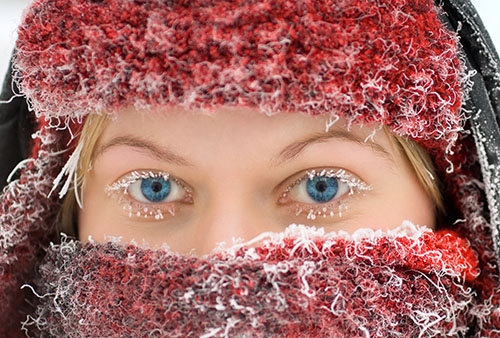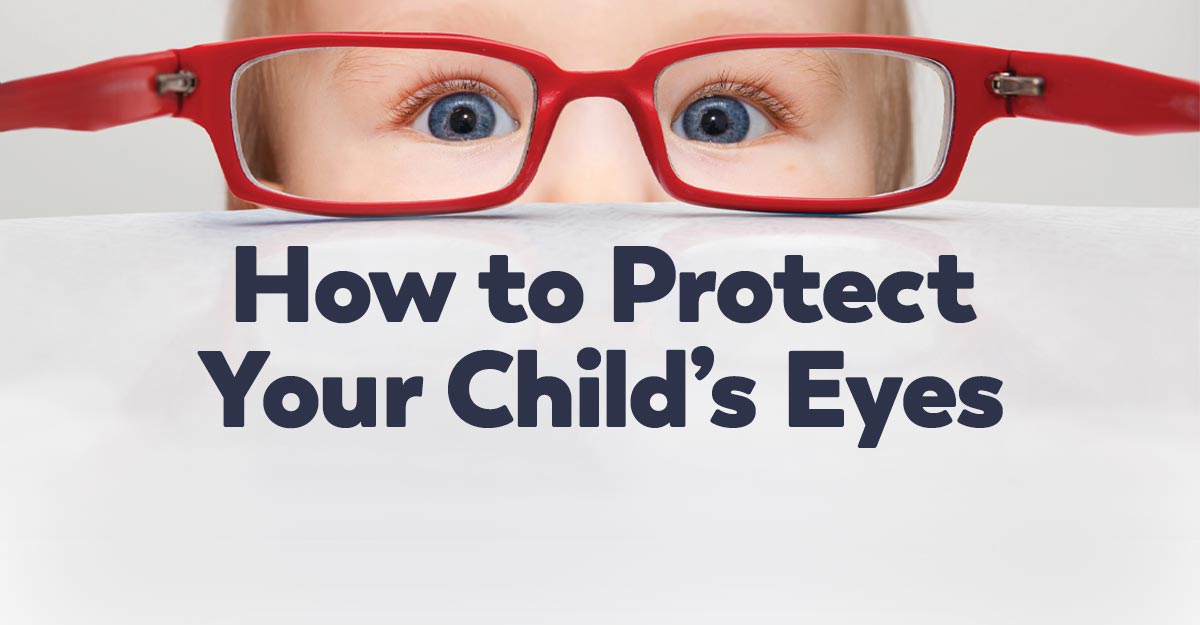Sunscreen provides an excellent way to protect your skin from the damaging rays of the sun, but did you know that your eyes can also suffer from sun damage? Long-term exposure to ultraviolet (UV) rays can cause a variety of eye problems, ranging from “sunburn” of the cornea to cancer. Learning more about the way the sun affects your eyes can help you prevent damage.
What Types of Light Cause Damage?
UV light is a type of electromagnetic radiation. Unlike visible light, it can’t be seen because it has a shorter wavelength. Types of UV light include:
- UVC Rays. UVC rays are very damaging to the eyes and skin. Luckily, the ozone layer prevents most of them from ever reaching the earth.
- UVB Rays. The ozone layer blocks some UVB rays, but a significant amount still break through, resulting in sunburns and suntans and contributing to the formation of cataracts.
- UVA Rays. UVA rays are particularly damaging to your eyes, although they are not quite as strong as UVB or UVC rays. These rays can damage the macula, the part of your retina responsible for central vision.
- Visible Blue Light. The bulk of your exposure to blue light comes from the sun, but it’s also found in digital screens, including computer monitors, smartphones, flat screen televisions, and LED and fluorescent lights. Exposure to blue light can increase your risk of developing macular degeneration.
What Conditions or Diseases Can Be Caused by Exposure to UV Light?
Exposure to UV light can increase your risk of developing these conditions:
- Photokeratitis. Photokeratitis causes an eye “sunburn.” If you are exposed to a significant amount of UV light in a few hours, such as if you spend the afternoon at the beach and do not protect your eyes, you may experience red eyes, tearing, sensitivity to light and a feeling that something is stuck in your eyes. Photokeratitis usually goes away on its own.
- Cataracts. Prolonged sun exposure can increase your risk of cataracts. When you have a cataract, the clear lens in the center of your eye becomes cloudy, impairing your vision.
- Macular Degeneration. Sun exposure can play a role in the development of macular degeneration, a condition that occurs when the cells in the center of your retina begin to deteriorate, affecting your ability to read, drive and recognize people.
- Conjunctival Growths. Sun exposure can also cause benign growths to form on the conjunctiva, the white part of your eye. The problem is more likely to occur if you live in an area that is very sunny year-round.
- Cancer. Melanoma and basal cell and squamous cell cancers can develop on your eyelids and most often occur on the lower eyelids. Possible symptoms of eyelid cancer include eyelash loss, bleeding bumps, new spots on the eyelids that grow or have irregular borders, and chronic inflammation of the eyelids that doesn’t get better when you use medication. In some cases, melanoma can affect the middle layer of your eye and cause blurry vision, a spot on your iris or a change in the shape of a pupil. Cancer can also develop in the conjunctiva.
Factors That Can Increase Your Risk of Sun Damage
You risk of eye sun damage may be higher if you:
- Spend time outdoors between 10 a.m. and 2 p.m.
- Live at a high altitude or near the equator
- Frequently spend time on surfaces that reflect light, such as sand or snow
- Take medications that increase your sensitivity to UV and blue light, including tranquilizers, birth control pills, diabetes and chemotherapy drugs, antihistamines, retinoids, steroids, anti-inflammatories and antibiotics.
During your yearly eye exam, your doctor not only tests your vision, but also looks for possible signs of sun damage. If it’s time for your next exam, or if you have any concerns about your eye health, call us today to schedule an appointment.
You can avoid many of the damaging effects of sun by following these tips:
- Schedule outdoor activities for the early morning or late afternoon/early evening hours when the sun’s rays are not quite as intense.
- Wear sunglasses every time you step outdoors. Look for glasses that block 100 percent of UV rays. Wraparound sunglasses provide the best protection.
- Block blue light by buying sunglasses with copper or bronze-colored lenses. (Make sure the glasses also protect you from UV light.)
- Buy a hat with a large brim for increased sun protection.
- Wear sunglasses even if your contacts block UV light. Although the protection is very helpful, your lenses don’t protect your entire eye.
- Don’t take your sunglasses off in shady locations. Your UV exposure decreases in the shade, but you will still receive some exposure from reflected light from sand, road surfaces or buildings.
Sources:
Skin Cancer Foundation: How Sunlight Damages the Eyes, 12/7/12
http://www.skincancer.org/prevention/sun-protection/for-your-eyes/how-sunlight-damages-the-eyes
American Optometric Association: UV Protection
http://www.aoa.org/patients-and-public/caring-for-your-vision/uv-protection?sso=y
The Vision Council: Spare Your Sight
http://www.thevisioncouncil.org/sites/default/files/TVC_UV_Report2016.pdf
All About Vision: Ultraviolet (UV) Radiation and Your Eyes, 5/16
http://www.allaboutvision.com/sunglasses/spf.htm
All About Vision: Blue Light: Bad for Your Eyes?, 4/16






